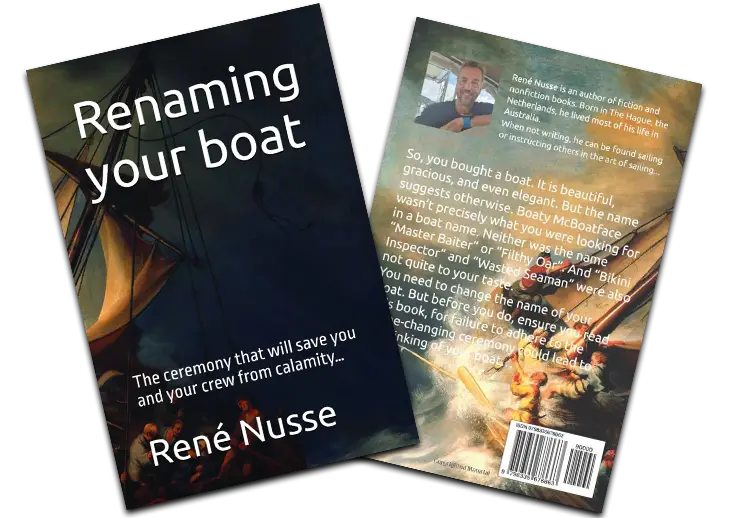Standing Rigging: Steel Wire vs Dyneema?
Several key factors are essential when deciding between metal (usually stainless steel wire) and Dyneema for standing rigging, depending on your sailing goals, boat type, and budget. The following is a quick comparison.
But before getting stuck in, the comparison is compiled conservatively based on the fact that those unfamiliar with Dyneema dismiss it as something new and less proven than conventional rigging material. This is particularly relevant to insurance companies that treat Dyneema as unknown and therefore suspect, even though no claim has been lodged against a professionally installed Dyneema rigging failure.
MATERIAL COMPARISON: METAL vs DYNEEMA FOR STANDING RIGGING
| Feature | Stainless Steel (Wire Rod) | Dyneema (Synthetic Rope) |
|---|---|---|
| Strength | Very high; reliable under long-term load | Comparable or even stronger by weight |
| Weight | Heavy; adds weight aloft | Much lighter; improves stability and performance |
| Stretch | Very low (minimal elongation) | Very low, but slightly more than rod |
| Durability (UV/Salt) | Excellent, proven longevity | Good, but must be UV-protected (chafe covers, coatings) |
| Inspection | Harder to detect internal corrosion | Easier to inspect visually for wear or chafing |
| Maintenance | Low, but susceptible to corrosion (esp. crevice corrosion) | Needs occasional replacement of chafe gear |
| Cost | High upfront, lasts 10 years (according to insurance underwriters) | More upfront costs, but can outperform steel when maintained properly |
| Installation | Requires professional tools (swaging, etc.) | Can be done with hand tools and splicing skills |
| Use in Racing | Common in traditional racing boats | Increasingly popular in high-performance and offshore racing |
| Use in Cruising | Traditional choice; very reliable | Gaining popularity, especially for light displacement boats |
When to Choose Stainless Steel:
- You’re doing long-term cruising with minimal maintenance opportunities
- You want a proven, set-it-and-forget-it solution
- Your insurance or classification society requires metal rigging
- Your boat is a heavy-displacement
When to Choose Dyneema:
- You’re racing or doing a performance-oriented refit
- You want to reduce weight aloft for a better righting moment
- You’re comfortable with routine inspections
- You’re heading into remote areas where DIY repairs might be needed
- You’re doing a temporary or expeditionary rig (e.g. emergency rigging, Arctic sailing)
Considerations:
- Terminations: Dyneema needs special splicing and tensioning setups (e.g., deadeyes and lashings) vs. turnbuckles for metal.
- Insurance/Surveyors: Some outdated insurers and marine surveyors still prefer or mandate metal rigging, especially for bluewater cruisers.
- Hybrid Systems: Some boats use metal stays for forestay/backstay (furling gear and HF antennas) and Dyneema for side stays.
INSURANCE CONSIDERATIONS: STAINLESS STEEL VS DYNEEMA RIGGING
| Aspect | Stainless Steel (SS) Wire | Dyneema (Synthetic) |
|---|---|---|
| Industry Standard | ✅ Yes – widely accepted as the norm for standing rigging | ⚠️ Not yet industry standard in all contexts |
| Surveyor Acceptance | ✅ No issues if rig is in good condition and under 10 years old | ⚠️ May trigger closer inspection or documentation |
| Bluewater Coverage | ✅ Usually covered without issue | ❌ Some underwriters exclude or limit offshore use unless pre-approved |
| Documentation Required | Minimal—just age and condition | Often requires rigging specs, pro install proof, inspection frequency plan |
| Perceived Risk | Lower perceived risk due to long track record | Higher perceived risk due to chafe, UV, and newer usage history |
| Premium Impact | Neutral | Can raise premiums or result in exclusions unless justified |
| Replacement Cycle | 10–20 years common | 5–8 years (so insurers may ask for frequent proof of maintenance) |
Why Insurers Prefer SS Wire:
- It has a long-established safety record
- Surveyors are trained to evaluate it easily
- Lower risk of catastrophic failure when properly maintained
- Less variation in quality between manufacturers/installers
Dyneema Challenges with Insurers:
- Still seen as “non-standard” in many regions
- Requires regular documented inspections and shorter replacement intervals
- Chafe, UV, and heat sensitivity can affect longevity—insurers worry about undetected damage
- Requires high-quality installation and tensioning — not all riggers have equivalent experience
If You Want to Use Dyneema and Be Covered:
Contact your insurer first – Get written confirmation of coverage.
Provide:
- Specs on Dyneema used (type, brand, breaking load)
- Proof of professional installation or high-quality DIY with documentation
- A maintenance/inspection schedule (e.g., visual checks every 6 months, full inspection every 2 years)
- Evidence of chafe protection and UV mitigation (covers, coatings, etc.)
Be ready to accept limitations, like coastal-only coverage or higher premiums.
Real-World Example:
Some bluewater sailors switching to Dyneema have reported needing a marine engineer or surveyor’s certification to convince underwriters that it is equivalent or superior in safety. Others were denied offshore passage insurance until they reverted to SS.
Bottom Line:
If you’re cruising locally or racing, Dyneema is often accepted with proper documentation. SS wire is safer from an insurance and ignorant surveyor standpoint for offshore or world cruising, unless your insurer is progressive and you’re meticulous about rig management.
Author
-

Rene is a keelboat instructor and sailing coach in the Mandurah area WA. He is also the author of several books about sailing including "The Book of Maritime Idioms" and "Renaming your boat".
View all posts


